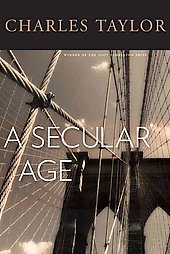In my first post, I discussed Charles Taylor’s book, A Catholic Modernity. I would now like to discuss a second…
A Secular Age

This discussion of Charles Taylor’s A Secular Age is the first discussion on The Immanent Frame. You might want to begin by reading the first essay by Robert Bellah here.
The discussion hosted below expanded to include critical conversation about the edited volume Varieties of Secularism in a Secular Age, edited by Michael Warner, Jonathan VanAntwerpen, and Craig Calhoun, in 2010.
For a sub-thread regarding “Sex in a Secular Age” click here.
For background on the founding of The Immanent Frame and the decision to host sustained dialogue on “the secular,” read Jonathan VanAntwerpen’s “Introducing The Immanent Frame” here.
What inspires us & what holds us together
Having escaped for a few seconds from the Commission, I had a chance to read many of the very interesting…
Marriage plots
Despite the putative separation of church and state, one of the major places in the U.S. where religion and the…
Practicing sex, practicing democracy
Why is it that sex is such a central part of American political life anyway? Why, when The New York…
Sex and the subject of religion
The current campaign within the Archdiocese of New York to canonize the radical activist Dorothy Day (1897-1980) offers a good…
What holds us together
In his response to my concern about whether “post-Durkheimian” is a viable category, Charles Taylor goes part way in answering…
Constitutional patriotism
Robert Bellah’s latest post poses clearly the issues that we’ve been agonizing over in Canada, and in a different way…
Framing the middle
From the opening pages, my historical antennae quickly began to quiver. Taylor’s book works in a space far removed from…
A case of heteronomous thinking
As a story, A Secular Age rivals Hans Blumenberg’s The Legitimacy of the Modern Age (which curiously it ignores) and…
Going beyond
One of the main arguments of Charles Taylor’s A Secular Age is that people, at least modern secular Westerners, have…












